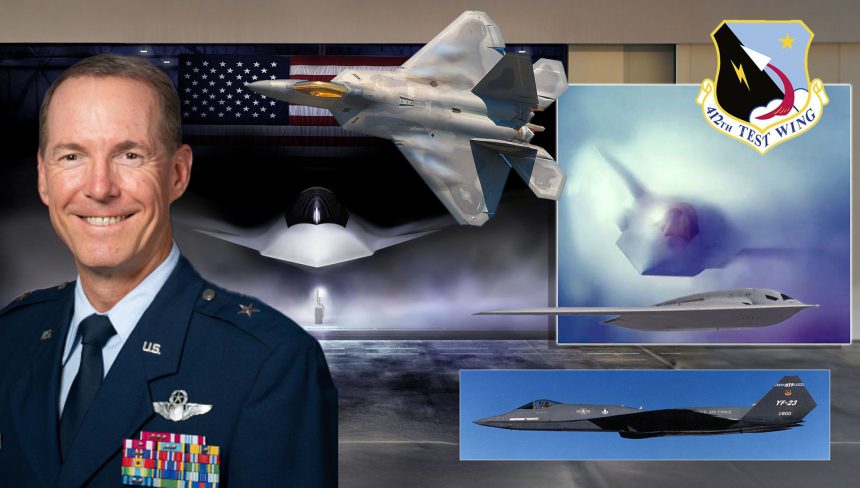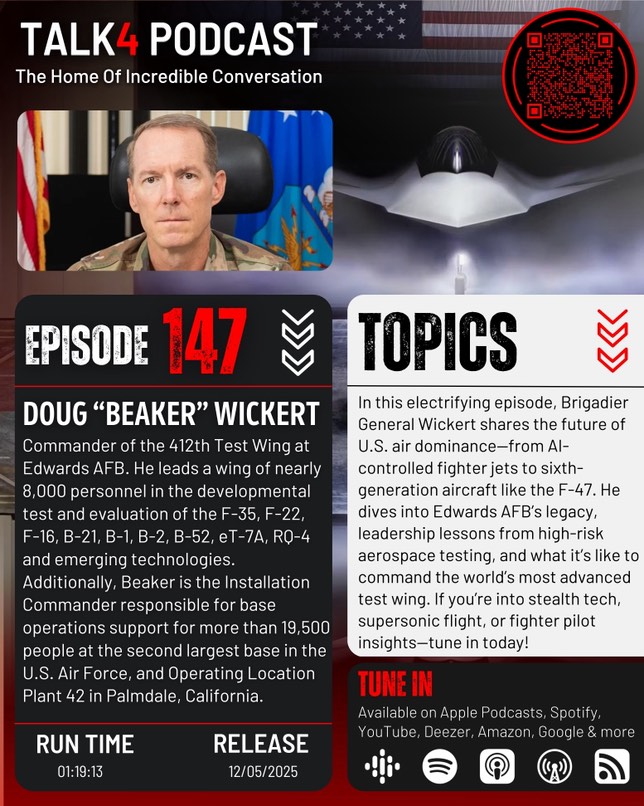Brig. Gen. Wickert Shares interesting insights in podcast interview.
In a wide-ranging and insightful interview on Episode 147 of the TALK4 Podcast, Brigadier General Douglas “Beaker” Wickert, Commander of the 412th Test Wing at Edwards Air Force Base, shared exclusive updates and reflections on some of the most high-profile developments in U.S. Air Force aviation. Hosted by Louis Skupien, a friend of The Aviationist who previously interviewed this Author on the same podcast (you can listen that episode here), the latest episode touches on major topics including the F-47 NGAD, ongoing B-21 Raider flight testing, the future of the F-22 Raptor, and the role of AI in tactical flight with the X-62A VISTA.
You can listen the full episode with “Beaker” here.
F-47: Official Naming and Strategic Context
For the first time publicly, Brig Gen. Wickert talked about the F-47 Next Generation Air Dominance (NGAD) fighter, which will be developed at Edwards AFB. “We finally had the announcement from the Oval Office… that Boeing was selected to build the next generation air dominance, and it will be known as the F-47,” Wickert explained.
“For about 10 years now, there’ve been a variety of studies going on. As the Chinese Communist Party, through the PLA, has developed this anti-access/area denial strategy in the Pacific, to try and keep us from upholding the global world order, we’ve realized that we need the ability to penetrate those areas.”
“China would really like to just say: ‘This entire part of the Pacific is ours. You can’t sail there. You can’t fly there.’ So one of the first initiatives was called PCA — Penetrating Counter Air — a study from at least 10–12 years ago. That eventually evolved into NGAD: Next Generation Air Dominance.”
“The service acquisition executive, about five years ago, confirmed that 6th-generation prototypes were flying. Just like we did with the YF-22 and YF-23 in the 1990s, we had advanced technology demonstrators flying.”
“And just recently we had the announcement from the Oval Office. The Secretary of Defense, Chief of Staff of the Air Force, and the President were there and they announced that Boeing was selected to build the Next Generation Air Dominance fighter, and it will be known as the F-47.”
“As the Chinese Communist Party through the PLA has kind of developed this anti-access area denial strategy in the Pacific… we’ve realized that we need the ability to penetrate this area.”
This strategic messaging aligns with what Brig. Gen. Wickert already emphasized earlier this year, when he warned in a public address that China’s military advancements, especially in the areas of hypersonic weapons and airpower projection, are progressing at a speed the United States cannot afford to ignore. Speaking from Edwards AFB to both an in-person and virtual audience, Brig. Gen. Wickert, during the Monday’s Back-in-the-Saddle Day, held on Jan. 6, 2025, highlighted how the People’s Liberation Army is not only building advanced platforms but also learning to use them more effectively through aggressive test and training cycles.
Wickert shared stark numbers: by 2027, in areas west of the international date line where U.S. assets are deployed, the PLA will outnumber U.S. forces about 12 to 1 in modern fighter jets (including 5 to 3 in fifth-generation aircraft) and 3 to 1 in maritime patrol planes. When it comes to bombers, the PLA’s fleet of 225 manned bombers faces no competition in the region. On the seas, the PLA has a 3-to-1 advantage in aircraft carriers and amphibious ships, more than 6-to-1 in advanced submarines, and a staggering 9-to-1 lead in modern multi-warfare combat ships.
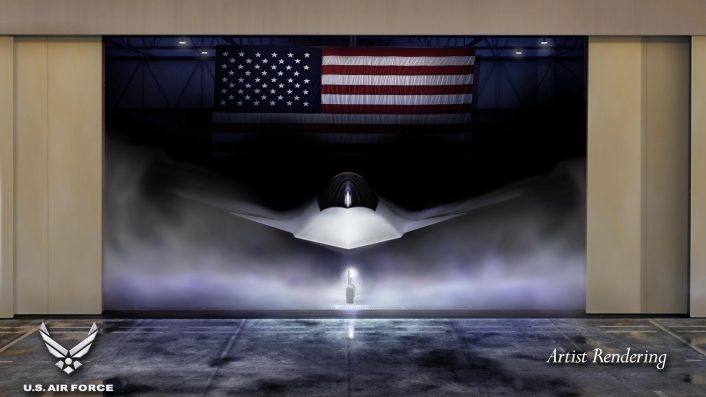
Back to the F-47: “We’ve already stood up a team here. Within our Air Dominance Combined Test Force (CTF), we have a group focused on this program. Eventually, that aircraft will come here, to Edwards Air Force Base, and be developed here.”
“The F-47 will be that next generation. It will be able to go places the F-35 can’t go. That’s part of what makes it sixth-gen, that step forward in signature management.”
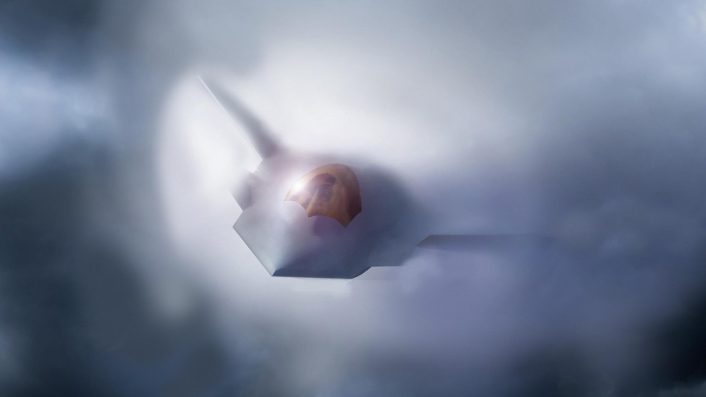
B-21 Raider: Testing at Edwards
“The B-21 is in active flight test here at Edwards Air Force Base. In fact, this is the only place we’re going to see all four bombers flying. In fact, this is the only place in the world where you’re going to see all four bombers flying: the B-52, B-1, B-2, and now the B-21.”
“General Bussiere was just here a couple of months ago, he’s the four-star in charge of Air Force Global Strike Command, and when he stepped off the plane, I said, “Ah Sir you came to see all your bombers.” That was a great moment.
“But looking ahead, we’re ultimately going to be a two-bomber Air Force. We’ll keep the B-52, the oldest one, and pair it with the B-21 Raider as our future fleet. The B-1 will be retired first, followed by the B-2 as B-21 capability comes online.”
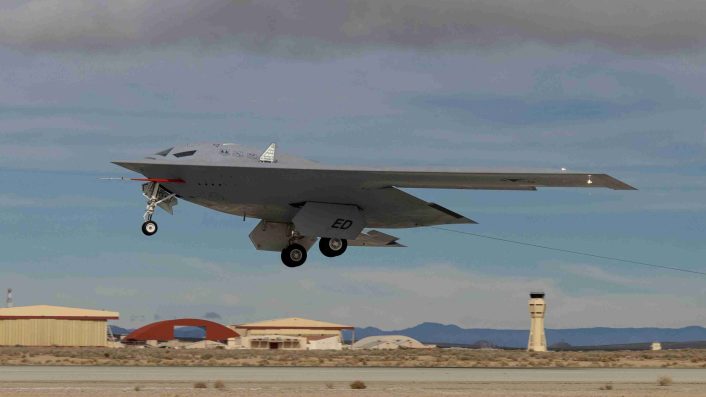
F-22 Raptor: Future Outlook
While praising the Raptor’s unmatched maneuverability and thrust vectoring capabilities, Wickert acknowledged that the F-47 is set to eventually replace the F-22. “It will probably take decades,” he said, adding that the F-22 still plays a vital role in Air National Guard units and demonstration teams.
“The F-22: incredible aircraft. Just from a handling qualities perspective, what it can do with thrust vectoring, it’s phenomenal. That kind of high-angle attack and low-speed maneuvering… it’s unmatched.”
“That said, the F-47 will ultimately replace the F-22. But it will probably take decades, just like with the bomber fleet transition. Right now, the F-22 still plays a key role, especially in units like the Raptor Demo Team, showing off just how capable it is.”
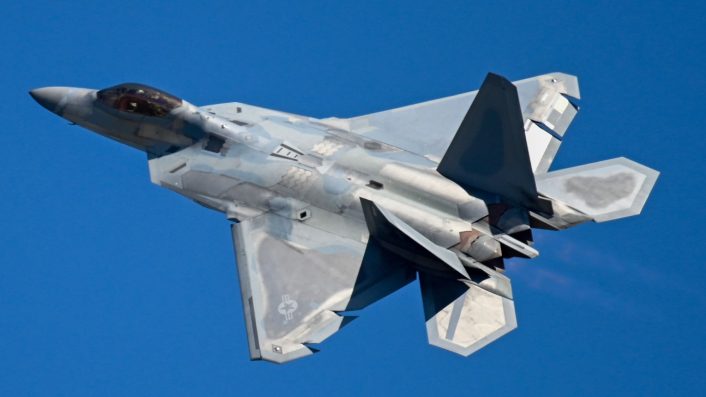
AI in Tactical Aviation: X-62A VISTA
In one of the most forward-looking segments, Wickert talked about AI already being tested in tactical flight roles using the X-62A VISTA, a modified F-16 we have talked about several times here at The Aviationist.
“We are right now developing AI agents that actually fly. At the Test Pilot School, we have a very special F-16, it’s called the X-62 or VISTA. It’s not a standard F-16. It’s a variable stability aircraft with completely different flight controls and a special spine down the back that allows us to install different outer-loop computers.”
“We’ve run basic fighter maneuvers completely hands-off : you push a button, and the AI takes over and flies the entire engagement. This is helping us build the test infrastructure to understand and evaluate autonomous agents flying combat maneuvers. That work is foundational to the Combat Collaborative Aircraft (CCA) program, and before the end of this decade, we’ll see manned aircraft flying side by side with AI-controlled teammates.”
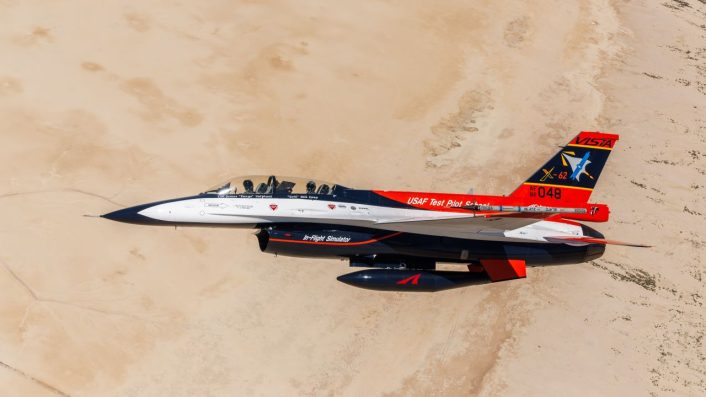
YF-23 vs YF-22: Retrospective
Wickert also shared his take on the legendary YF-22 vs. YF-23 competition. While acknowledging that the YF-23 likely had better stealth and infrared shielding, he attributed the selection of the YF-22 to concerns over Northrop’s performance on the B-2 program.
“Beautiful airplane. I actually have a model of one sitting on my desk,” says Wickert. “At the Air Force Academy, we had both the YF-22 and YF-23 hanging in the classroom. We gave cadets the original RFP and challenged them to redesign it for affordability, and we always discussed why the YF-22 was selected.”
“The YF-23 probably had slightly better stealth characteristics, with its engine placement and infrared shielding. It had more planform alignment due to its angled tail surfaces. But Northrop, the developer, was already over budget and behind schedule on the B-2 at the time. There was concern whether they could handle two major defense programs simultaneously.”
“Both jets met the requirements, but in the end, Lockheed got the nod for the YF-22 so Northrop could focus on delivering the B-2.”
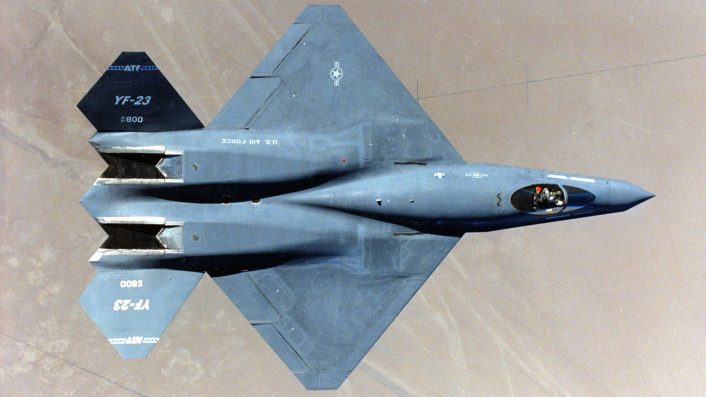
A big thank you to our friend Louis Skupien for the heads up! His TALK4 Podcast continues to deliver exceptional aviation content and access to top-level defense leaders. Once again, we recommend listening to the full episode here.

